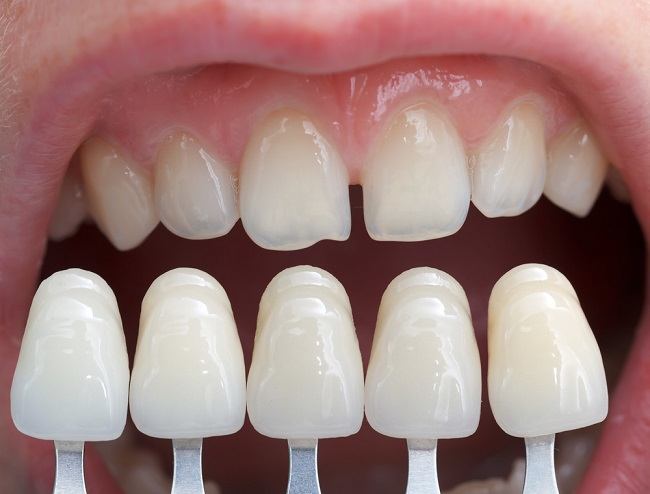Gatifloxacin eye drops are drugs to treat eye infections caused by bacteria, one of which is bacterial conjunctivitis. This medicine should only be used with a doctor's prescription.
Gatifloxacin eye drops belong to the class of quinolone antibiotics. This class of antibiotics works in a way that is not effective for treating infections that are not caused by bacteria.

Gatifloxacin eye drops trademark:Giflox, Gaforin
What is Gatifloxacin Eye Drops
| group | Quinolone class of antibiotics |
| Category | Prescription drugs |
| Benefit | Overcoming bacterial infections in the eye |
| Consumed by | Adults and children (over 1 year old) |
| Gatifloxacin eye drops for pregnant and lactating women | Category C: Animal studies have shown adverse effects on the fetus, but there are no controlled studies in pregnant women. The drug should only be used if the expected benefit outweighs the risk to the fetus. It is not known whether gatifloxacin eye drops are absorbed in breast milk or not. If you are breastfeeding, do not use this medicine without consulting your doctor first. |
| Drug form | eye drops |
Precautions Before Using Gatifloxacin Eye Drops
Gatifloxacin eye drops should not be used carelessly. Here are things you need to pay attention to before using gatifloxacin eye drops:
- Do not use gatifloxacin eye drops if you are allergic to this medicine or to quinolone antibiotics.
- Do not drive or do activities that require alertness after using gatifloxacin eye drops, because taking this medicine may cause blurred vision.
- Tell your doctor if you are pregnant, breastfeeding, or planning a pregnancy.
- Tell your doctor if you are using other eye drops or are taking any medications, supplements, or herbal products.
- See your doctor right away if you have an allergic reaction to the drug or an overdose after using gatifloxacin eye drops.
Dosage and Instructions for Use of Gatifloxacin Eye Drops
The following are common doses of gatifloxacin eye drops to treat bacterial eye infections, such as bacterial conjunctivitis:
0.3% eye drops
- Days 1–2: 1 drop every 2 hours, up to 8 times a day
- Days 3–7: 1 drop up to 4 times a day
0.5% eye drops
- Day 1: 1 drop every 2 hours, maximum 8 times a day
- Days 2–7: 1 drop 2–4 times a day
How to Use Gatifloxacin Eye Drops Correctly
Always follow the instructions given by the doctor and the instructions for use on the medicine package. Gatifloxacin eye drops are used by means of drops into the eyeball.
Before using gatifloxacin eye drops, make sure you wash your hands thoroughly. Make sure the tip of the gatifloxacin eye drop bottle does not touch your eyes, hands, or other surfaces, to avoid contamination.
Tilt your head and draw in the lower eyelid. Look up and slowly instill 1 drop of gatifloxacin eye drops. Close your eyes while looking down for 1-2 minutes.
After that, gently press the corner of the eye near the nose to prevent the medicine from flowing out. Do not blink or rub your eyes during drug application. Close the medicine cap immediately after use, but do not wash the tip of the medicine bottle.
Do not wear contact lenses while using gatifloxacin eye drops. If you are using other eye drops or ointment, wait 5 minutes after using this medicine.
Do not use gatifloxacin eye drops if there are drops in the liquid or if the liquid has changed color.
Store gatifloxacin eye drops at room temperature, in a dry place, and away from sunlight. Keep out of reach of children. Make sure the medicine bottle is tightly closed before storing it.
Interactions of Gatifloxacin Eye Drops with Other Drugs
The use of gatifloxacin eye drops together with other drugs can cause interaction effects, including:
- Increase the effect of antiarrhythmic drugs, arsenic trioxide, cisapride, chlorpromazine, droperidol, mefloquine, dolasetron, mesoridazine, moxifloxacin, pimozide, tacrolimus, pentamidine, thioridazine, or ziprasidone
- Increases the risk of changes in blood sugar levels when used with antidiabetic drugs
- Increase the concentration of theophylline in the blood
- Affects the effect of anticoagulant drugs, such as warfarin
- Increases blood creatinine levels when used with ciclosporin
Side Effects and Dangers of Gatifloxacin Eye Drops
The following are some of the side effects that may occur after using gatifloxacin eye drops:
- Blurred vision
- Watery eyes
- Headache
- Bad taste in mouth
Check with your doctor if the above complaints do not go away or get worse. See your doctor right away if you have an allergic reaction to a medication or a more serious side effect, such as:
- Prolonged red eyes
- Swollen eyes or eyelids
- Red, dry, irritated, or sore eyes
Prolonged use of gatifloxacin eye drops can increase the risk of fungal infections of the eye. Therefore, do not use this medicine for longer than the prescribed time.









